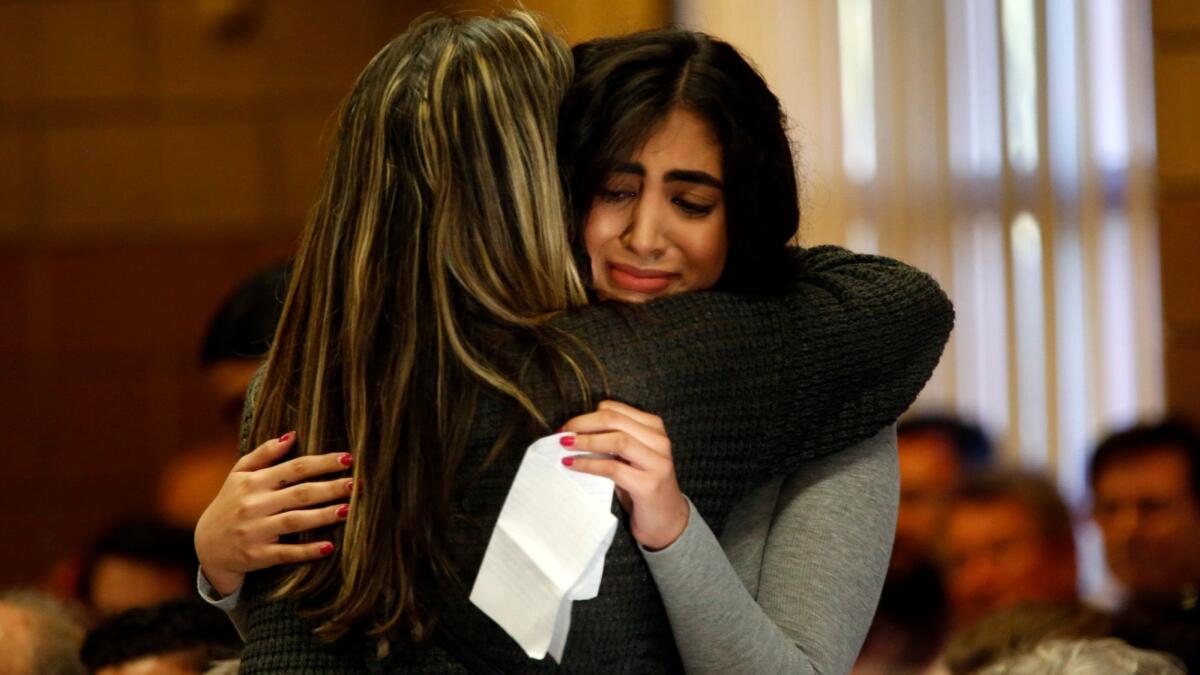Editorial: Does free speech allow students to post racist images of their classmates online?

- Share via
It’s hard to imagine what attracted a handful of teenagers in the liberal, highly educated Bay Area town of Albany to the ugliness of racism. But something did, and they’re paying for it — with suspensions (and in one case, possibly, expulsion) that will stay on their records, as well as the contempt of most of their fellow students.
The contempt they fully deserve and had better be prepared to live with (though there also are claims that students acted violently toward them, and that can’t be allowed either). The suspensions, which are being contested in a lawsuit brought by their parents, are a murkier matter.
If all they were doing, via their private accounts on Instagram, was expressing racist beliefs and “liking” what others were saying, they are entitled to do so without official repercussions from their school. Students, like adults, are protected under the 1st Amendment and may express even highly offensive opinions freely.
Students have every right to show up in support of a white nationalist public rally, but they don’t have the right to shout threats toward their classmates.
The situation doesn’t look that simple, though. According to some news reports, there might have been two Instagram offenses, and at least one of them involved images that clearly went beyond political expression: photos of students from the teenagers’ school — all female and all but one a person of color — with nooses drawn around their necks, as well as a similar image of the school’s girls basketball coach, who is African American. Some of the photos reportedly were shown alongside images of apes.
Making the distinction between such scenarios — pure expression of belief vs. threatening, bullying online treatment of specific students and faculty — is critical to reconciling students’ recognized free-speech rights with the limits the courts have rightly set on behavior that disrupts school, even if it doesn’t take place on campus.
One of the lawyers representing the troublemakers likened what they did to a group of students hanging out together while one drew an offensive sketch. Not quite. Just because they were in their own homes, using private accounts, doesn’t necessarily mean their actions were entirely private; there were other students reading their posts (and obviously enough social media followers for an uninvolved student to bring this to school officials’ attention). Nor is privacy the only issue involved. While the students would have had every right to show up in support of a white nationalist rally, in a public place, they would not have the right to shout threats toward their classmates.
The 1st Amendment offers great freedom to students, as it does to adults, but not the freedom to bully or make others on campus feel threatened.
Follow the Opinion section on Twitter @latimesopinion and Facebook
More to Read
A cure for the common opinion
Get thought-provoking perspectives with our weekly newsletter.
You may occasionally receive promotional content from the Los Angeles Times.










